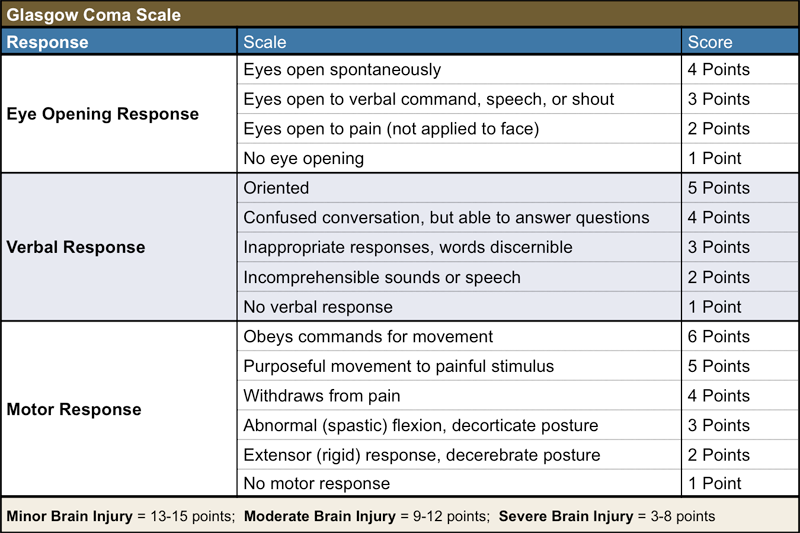OVERVIEW
This page will cover the Glasgow Coma Scale (GCS) which is a standardized scale used to assess the level of consciousness of a patient. Evaluating the GCS can be very useful when contextualizing the status of a patient who presents with acute neurological symptoms, acute traumatic injury, or in the setting of other acute emergent presentations.

WHAT IS IT EXACTLY?
The GCS is a 15 point scale that has 3 separate components that involve the patient’s eye opening response, verbal response, and motor response. Patients who have no deficits will score 15 on this scale and inversely patients who are completely unresponsive will score a 3. Below is the full scale explained:

HOW CAN WE APPLY THE GCS PRACTICALLY?
The GCS can be used very practically when evaluating a patient. Here is an example of how to calculate a GCS.
- Eye opening response: As you walk in the room evaluate the patient’s ability to open their eyes. If they don’t do it spontaneously, ask them to open their eyes (loudly). If this doesn’t work apply pressure/pain to the nail beds of the extremities using a pen (you may need to do it to multiple extremities if there is a concern some extremities may not be responsive such as in the setting of hemiparesis etc).
- Verbal response: Loudly ask the patient what their name is, what date it is, where they are (assessing orientation as well). Gauge their response using the scale above.
- Motor response: Ask the patient to move their extremities. If there is no response apply painful stimuli to each extremity as described above and asses the response.
Page Updated: 10.20.2020